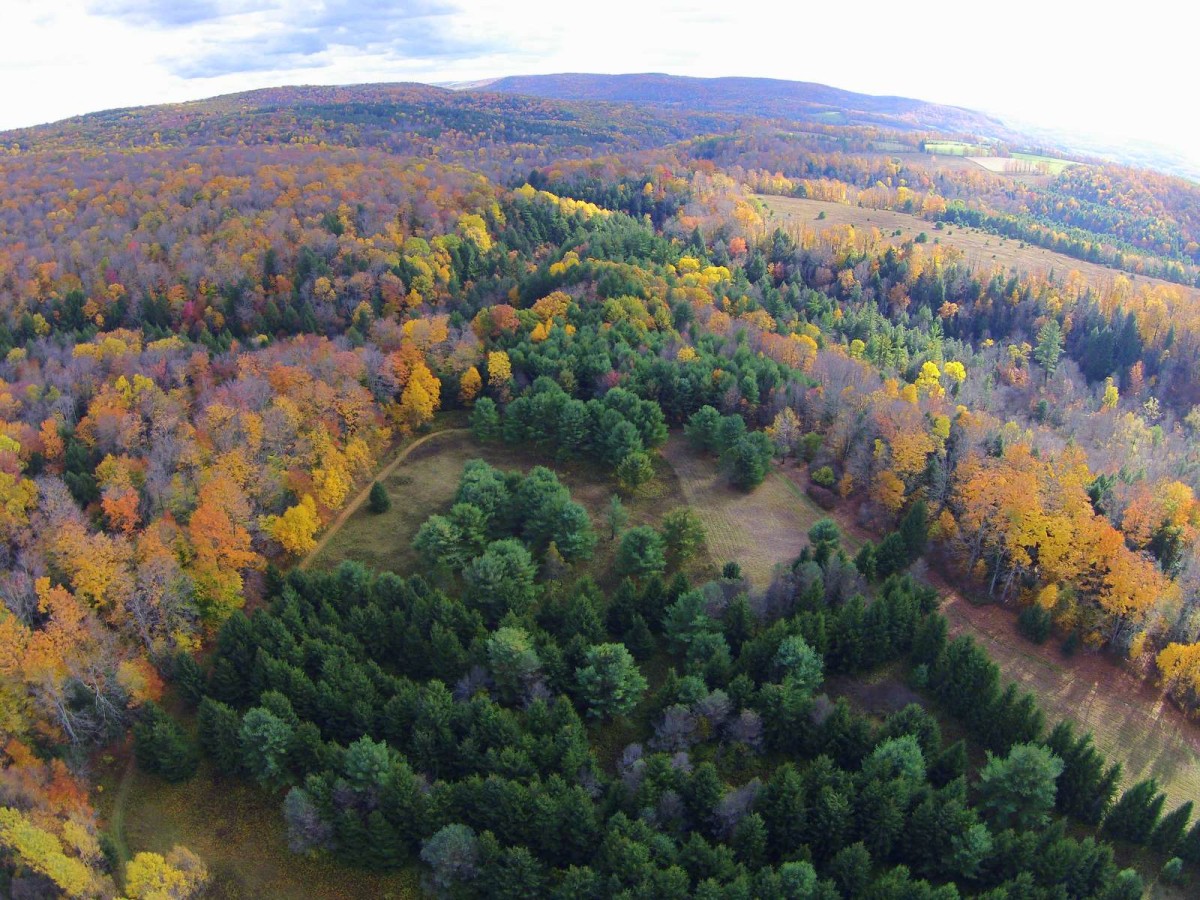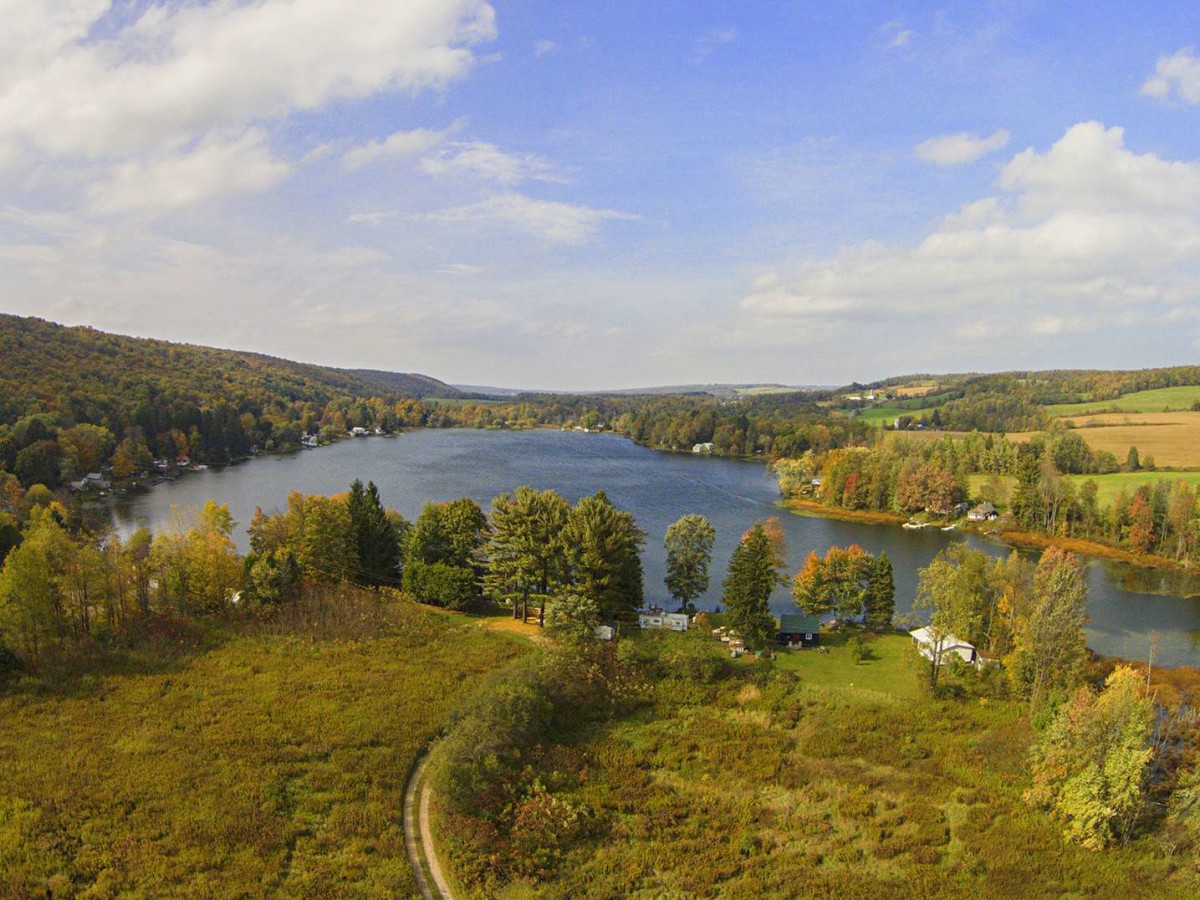How do we decide which lands and waters to protect? The Land Trust has identified key geographic focus areas, thematic focus areas, and other principles to guide the conservation effort.
Geographic Focus Areas
With such a large region and so many projects to choose from, how do we set priorities and allocate resources? This is a daunting challenge but the Land Trust is not alone in its efforts. We first start by reviewing public conservation plans such as New York State’s Open Space Plan and county comprehensive plans. We then work with local governments, public conservation agencies, and other nonprofits to refine these documents through additional resource inventories, outreach to stakeholders, and the development of more locally focused conservation plans.
Through this work, we have identified a number of focus areas, including 3 that have been particular priorities during recent years:
Emerald Necklace
We are working with partners to create a greenbelt that will ultimately link 50,000 acres of existing public open space extending in an arc around the south end of Cayuga Lake from Finger Lakes National Forest in the west to Hammond Hill and Robinson Hollow State Forests in the east. This resource-rich area encompasses two Audubon Important Bird Areas, several dozen county-designated Unique Natural Areas, and approximately 80 miles of the Finger Lakes Trail.
Explore: Visit FLLT preserves in the Emerald Necklace, including: Roy H Park Preserve, Sweedler and Thayer Preserves at Lick Brook, Ellis Hollow Nature Preserve and Lindsay-Parsons Biodiversity Preserve.
Learn More: Read our Emerald Necklace brochure and Conservation Plan: The Finger Lakes Trail in the Emerald Necklace.
Canadaigua Highlands
At the south end of Canandaigua Lake we are creating a corridor of conserved lands that will ultimately extend from Bare Hill, a scenic promontory overlooking the lake’s eastern shore, to the Village of Naples, south of the lake. This area encompasses several rugged gorges, the West River Valley’s extensive wetlands, the prominent ridge of South Hill or “the Whaleback,” and the scenic farmland of Vine Valley. This area includes an Audubon Important Bird Area, excellent paddling opportunities, and miles of hiking trails. The Highlands also encompass several sites that are of particular cultural significance to the Seneca Nation.
Explore: Discover the Canandaigua Highlands by visiting Grimes Glen County Park, Carolabarb Park, and Great Hill Nature Preserve.
Learn More: Read our Conservation Plan: A Vision for the Canandaigua Watershed.
Skaneateles Highlands
Regarded as perhaps the most pristine of the Finger Lakes, Skaneateles Lake is well known for its clear waters. The wooded hills that embrace the south end of the lake create a scene that is more reminiscent of the Adirondacks than some other Finger Lakes. To ensure the future of this gem, the Land Trust is working with a variety of partners to create a greenbelt that will circle the southern half of the lake — from the fossil-rich Staghorn Cliffs on the east side to Carpenter’s Falls on the west. Resources in this area include the extensive wetlands of Bear Swamp, pristine streams, an Audubon Important Bird Area, steeply sloping woodlands, and miles of recreational trails.
Explore: Discover the Skaneateles Highlands by visiting the Bahar Preserve and Carpenter’s Falls Unique Area and High Vista Nature Preserve.
Learn More: Read our Conservation Plan – A Vision for the Skaneateles Highlands.
Thematic Focus Areas
In addition to these landscape-scale focus areas, the Land Trust is also working to protect other key lands distributed throughout the region:
Undeveloped Shoreline
Our most threatened land resource is also the most challenging for us to protect because of its high economic value. Despite this fact, we’ve had some major successes protecting beautiful stretches of shoreline through direct acquisition as well as the use of conservation easements. To date, the Land Trust has protected more than 1.8 miles of undeveloped lakeshore.
High-Quality Streams and Wetlands
Lands bordering the region’s streams and wetlands harbor an astounding array of plants and animals and also play an important role in maintaining water quality. The Land Trust has identified several of the region’s most significant watercourses and made them a focus of our protection efforts. Conservation priorities include portions of the Montezuma Wetlands Complex as well as wetlands at the south end of Owasco and Seneca Lakes. High-quality stretches of rivers and streams are also a priority with recent success on Six Mile Creek — the source of Ithaca’s drinking water, Fall Creek – the largest tributary to Cayuga Lake, and Owego Creek — one of the region’s premiere trout streams.
Prime Farmland
Conserving our region’s scenic farmland is also a focus of our efforts, with an emphasis on those farms that host our most productive agricultural soils. While farmland is found throughout our region, the northern portions of the Finger Lakes host some of the most productive soils, and the Land Trust has worked with farmers, local governments, and New York State’s Department of Agriculture and Markets to protect several large farms through the use of conservation easements that prevent subdivision for housing developments and keep lands in agriculture.
Other Guiding Principles
While the Land Trust pursues these strategic focus areas, we also consider other opportunities as they present themselves. When opportunities arise, these prospective projects are assessed by staff as well as an advisory committee composed of both local citizens and conservation professionals.
Considerations taken into account include the size of the property, quality of its wildlife habitat or agricultural value, significance for maintaining water quality, and whether it is adjacent to existing conserved land. In addition, a careful assessment of long-term land stewardship costs associated with any prospective project is also considered.
In the end, the Land Trust intends to create networks of conserved lands that maintain the character of our region and the quality of our water while providing important habitat for fish and wildlife, locally grown food, scenic vistas, easy access to the natural world and plenty of places to get outside and explore.




